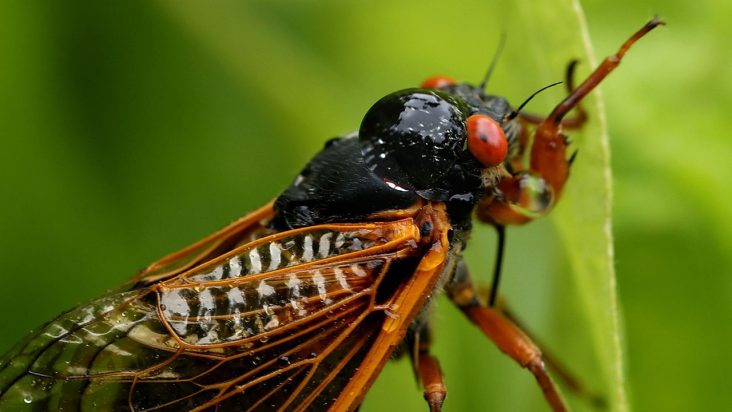Trillions of cicadas set to inundate the South
by June 5, 2024 2:21 pm 1,055 views

The last time two particular broods of cicadas emerged at the same time, Thomas Jefferson was president of the United States, the country made the Louisiana Purchase, more than doubling its physical size, and Ohio was admitted into the Union as a free state.
A lot of territory acquired in that purchase will be inundated with cicadas this summer. The insects, known for their dark green hard-shell bodies and large red eyes, produce a hard to ignore buzzsaw-like sound.
The insects have made headlines for months because of the emergence of two broods — an occurrence two centuries in the making — is expected to bring astronomical numbers of these insects above ground. The group of cicadas known as Brood XIX emerge every 13 years. This is also the year for Brood XIII, to emerge after 17 years underground.
“Over the next few months, people in the South will witness the emergence of the largest brood of periodical cicadas in the country, spanning parts of 16 states,” said Jon Zawislak, extension urban entomologist for the University of Arkansas System Division of Agriculture.
“The insect army poised to invade are still nymphs, in the very last stage of their development,” he said “After feeding on fluids from tree roots for 13 years, slowly growing and molting underground, they will make their debut by crawling up and out of the soil when it warms to about 64 degrees Fahrenheit and is softened by rains.”
The two broods are only likely to overlap geographically in southern Illinois.
Some of the insects are making their presence known. According to iNaturalist.org, app users have reported cicadas north of the Ozarks, in the Ouachita Mountains, around and east of Jonesboro and scattered in southern Arkansas around Crossett, Warren and Camden.
The adult cicadas pose no threat to people, pets or livestock. They don’t sting and don’t bite.
“Mature adults don’t feed and don’t even have functional mouthparts with which to bite,” Zawislak said. “Having spent the last 13 years doing little more than eat, they emerge with the single-minded goal of making more cicadas.”
The buzzing is the male’s way of attracting a female. After mating, the female cicada saws a shallow crevice into a tree branch, where she deposits up to 20 eggs. She will repeat this process, producing up to 600 eggs over three to four weeks.
After about six weeks, the eggs hatch and the nymphs drop to the ground and land unhurt because of their small size.
“They quickly burrow into the soil and will tap into plant and tree roots to feed on the xylem almost right away,” Zawislak said. “They will continue to feed like this, sometimes moving to new food sources as they slowly mature. These nymphs will grow and molt four times over the next 13 years, when it’s time for the next generation to emerge.”
Cicadas are eaten as a high protein food around the world, according to Britannica. They inhabit a broad range of forests, grasslands and deserts. Females can sometimes damage saplings when they produce their eggs, but otherwise the insects pose no threat to humans, according to scientists.
